No. 1 Fang Wen & Yi-Gang Wei: Primulina dongguanica F. Wen, Y. G. Wei & R. Q. Luo (Gesneriaceae), a new species from South China RésuméWEN, F. & Y.-G. WEI (2014). Primulina dongguanica F. Wen, Y. G. Wei & R. Q. Luo (Gesneriaceae), une nouvelle espèce du Sud de la Chine. Candollea 69: 9-19. A new species of Gesneriaceae from south-western Guangxi, China, Petrocodon villosus, is described and illustrated. It resembles P. ferrugineus, but is differentiated by several characters, such as the size of bracts, calyx and corolla, the indumentum of leaf blades, calyx, filaments and the outside of the corolla; the corolla tube shape, limb and lobes, the disc and stigma. A description of P. villosus, together with illustrations, habitat description and a diagnostic comparison are presented. Primulina diffusa Xin Hong, Fang Wen & S.B. Zhou (Gesneriaceae), a new species growing in rocky crevices at the foot of a limestone hill near the Sino-Vietnamese border in southwestern Guangxi, China, is described and illustrated. It is morphologically similar to P. hochiensis and P. hochiensis var. rosulata, but can be distinguished by having single-flowered cymes; short peduncle (1–1.5 cm long); narrowly elliptical to subulate bracts, 2–2.5 × ca. 0.6 mm; 1–2 cm long pedicel; calyx lobes that are densely puberulent on both sides; and filaments that are geniculate near the middle. A species of Ornithoboea Parish ex C. B. Clarke (Gesneriaceae), O. lacei Craib was newly recorded from China. A description and photos of the species are provided. The voucher specimens are hold in Herbarium of Guangxi Institute of Botany (IBK). Primulina carinata Y.G. Wei, F. Wen & H.Z. Lü (Gesneriaceae) is described and illustrated as a new species endemic to Guangxi, China. It is similar to P. parvifolia (W.T. Wang) Yin Z. Wang & J. M. Li, but can be distinguished by its lack of stolons, by its longer peduncle 12–20 cm or more (vs 5.3–5.6 cm in P. parvifolia), by the longer pedicels 10–12mm(vs. ca. 8 mm), by the ventral surface of the corolla tube longitudinally constricted, forming a keel(vs. the upper portion of corolla tube swollen, forming an elevated ridge), by the staminal sparsely glandular puberulent (vs. glabrous) ,and by filaments three staminodes (vs. two), with the lateral two at different lengths, ca. 4 mm and ca. 2mm (vs. the staminal pair at equal length,ca. 5 mm). ABSTRACTSince the transfer of several species of Briggsia to Oreocharis, including the type species Briggsia longifolia, the remaining 16 species of Briggsia have been in taxonomic limbo. We address this unsatisfactory situation by transferring 10 further species into Oreocharis on morphological grounds and by raising a new genus, with two species, based on previously published molecular data and their morphological distinction from other genera. This leaves only four species for which, at present, no satisfactory solution is available but, for pragmatic reasons until further research can be done, we place them in Loxostigma to which they are morphologically most similar and in which one already has a combination. Several names are lectotypified. Glabrella Mich. Möller & W.H.Chen, gen. nov.Differs from other Chinese genera of Gesneriaceae by the combination of indistinct short stem, 5–6 cm long; glabrous petiole and leaf blade, leaf base cuneate or narrowly peltate; fertile stamens 4, cohering in pairs at apex; capsule straight in relation to the pedicel, not twisted; and seeds unappendaged. Primulina argentea Xin Hong, F. Wen & S. B. Zhou, sp. nov. (Gesneriaceae) is and illustrated from N Guangdong Province, S China. It is morphologically close to P. fengshanensis F. Wen & Yue Wang and P. orthandra (W.T. Wang) Mich. Möller & A. Weber, but is differentiated from its congeners by several characters of the shape, texture and indumentum of the leaf blade and bracts, length of pedicels, size of calyx lobes, colour of corolla, indumentum of staminodes, etc. A description of P. argentea together with illustrations, distribution map, habitat description and a diagnostic comparative table with P. fengshanensis and P. orthandra are presented. Primulina glandaceistriata X.X. Zhu, F. Wen & H. Sun (Gesneriaceae) from Lingchuan County, Guangxi, is illustrated and described as a new species. It is morphologically close to P. dryas and P. beiliuensis, but can be easily distinguished by its leaf blades oval, ovate or nearly rounded, and both leaf surfaces being sparsely purple strigulose and the hairs with a papillose base; shorter peduncle 7.5–9.5 cm long that is densely erectly purple pilose; bracts inside densely erectly purple pilose; corolla pale purple to purple, inner surface glabrous and with sparse purple spots and two obviously brown stripes, and the outer surface piloglandulose; staminodes longer, ca. 7.5 mm long. The conservation status of this new species was assessed as “Critically Endangered” (CR).
Candollea 69(1) : 9–19.
ABSTRACTWEN, F. & Y.-G. WEI (2014). Primulina dongguanica F. Wen, Y. G. Wei & R. Q. Luo (Gesneriaceae), a new species from South China. Candollea 69: 9-19. In English, English and French abstracts.
A new species, Primulina dongguanica F. Wen, Y. G. Wei & R. Q. Luo (Gesneriaceae) is described and illustrated from Dongguan city, Guangdong province, S China. The species grows in crevices of granite within subtropical evergreen broad-leaved forests or shrubby vegetation in the Yinpingzui nature reserve. Primulina dongguanica differs from other species in the genus occurring in Guangdong province, China. Despite sharing some morphologically characters with Primulina eburnea (Hance) Y. Z. Wang, Primulina dryas (Dunn) Mich. Möller & A. Weber, Primulina napoensis (Z. Y. Li) Mich. Möller & A. Weber and Primulina spec. nov., several features allow its recognition. It is an endemic species confined to the Yinpingzui nature reserve. Its conservation status is also presented.
En anglais, résumés anglais et fran?ais. Une nouvelle espèce, Primulina dongguanica F. Wen, Y. G. Wei & R. Q. Luo (Gesneriaceae) est décrite et illustrée de la ville de Dongguan de la province de Guangdong en Chine du Sud. Cette espèce pousse dans les crevasses de granite, dans la forêt de feuillus subtropicale sempervirente ou dans la végétation buissonnante de la réserve naturelle de Yinpingzui. Primulina dongguanica diffère des espèces du même genre qui sont répertoriées pour la province du Guangdong en Chine. Quoique morphologiquement proche de Primulina eburnea (Hance) Y. Z. Wang, Primulina dryas (Dunn) Mich. Möller & A. Weber, Primulina napoensis (Z. Y. Li) Mich. Möller & A. Weber et Primulina spec. nov., elle s’en distingue au travers de plusieurs caractères distinctifs. C’est une espèce endémique de la réserve naturelle de Yinpingzui. Son statut de conservation est présenté.
FIGURE 1. Primulina dongguanica F. Wen, Y. G. Wei & R. Q. Luo. A. Habit; B. Opened corolla with stamens and staminodes; C. One calyx lobe; D. Calyx and pistil. [Fang Wen 100803, IBK] [Drawing: Wen-Hong Lin]
FIGURE 2. Primulina dongguanica F. Wen, Y. G. Wei & R. Q. Luo. A. Natural hillside habitat ; B. Natural habitat ; C. Plant in natural habitat ; D. Plant with cymes and flowers in cultivation; E. Frontal view of cyme and flowers ; F. Anatomical dissections of the cyme, showing bracts, pistil and opened corolla; G. Lateral view of flower, calyx and pistil ; H. Adaxial and abaxial views of calyx lobes. [D-H: Fang Wen 100803, IBK] [Photos: A-C: Fang Wen; D-E: Shi-Liang Mo; F-H: Wen-Hong Lin]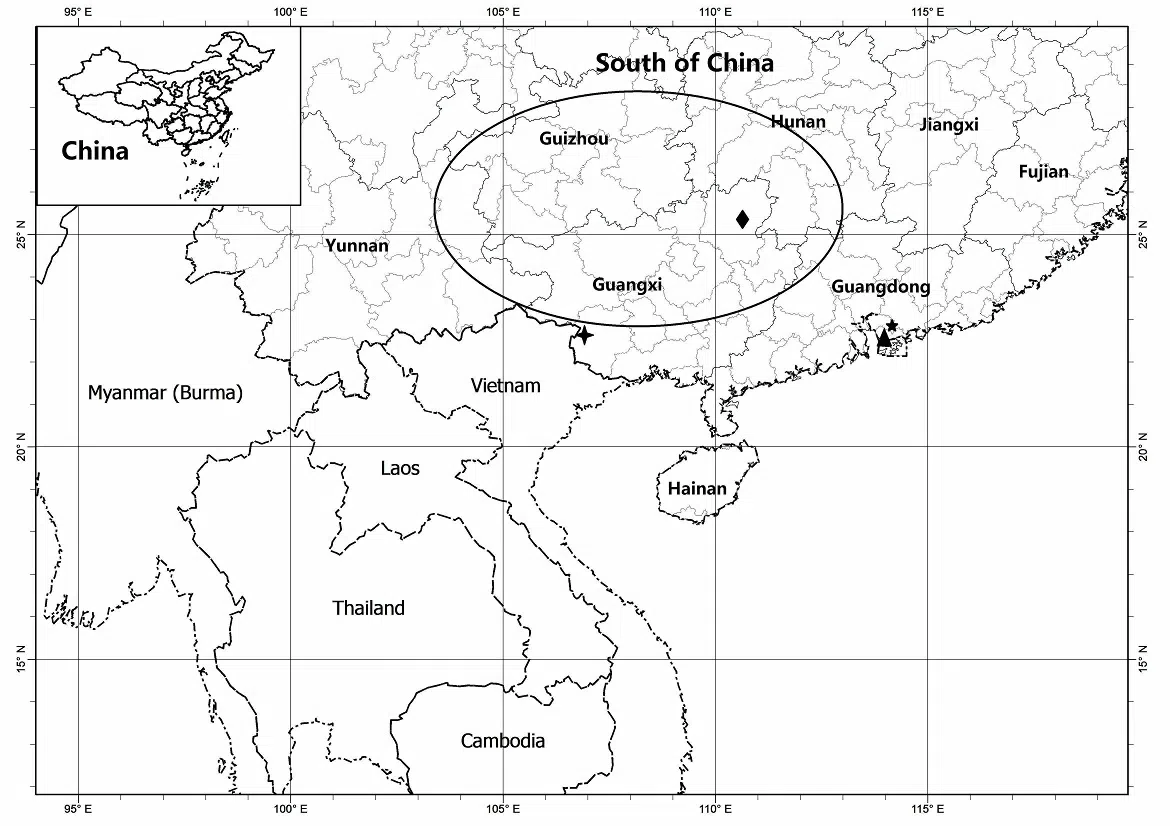
FIGURE 3. Distribution of Primulina dongguanica F. Wen, Y. G. Wei & R. Q. Luo (H), P. eburnea (Hance) Y. Z. Wang (in the elliptical area), P. dryas (Dunn) Mich. Möller & A. Weber (s), P. napoensis (Z. Y. Li) Mich. Möller & A. Weber (F) and P. spec. nov. (u) in China.
Editors' Note: P. spec. nov. is Primulina pseudoroseoalba Jian Li, F. Wen & L.J. Yan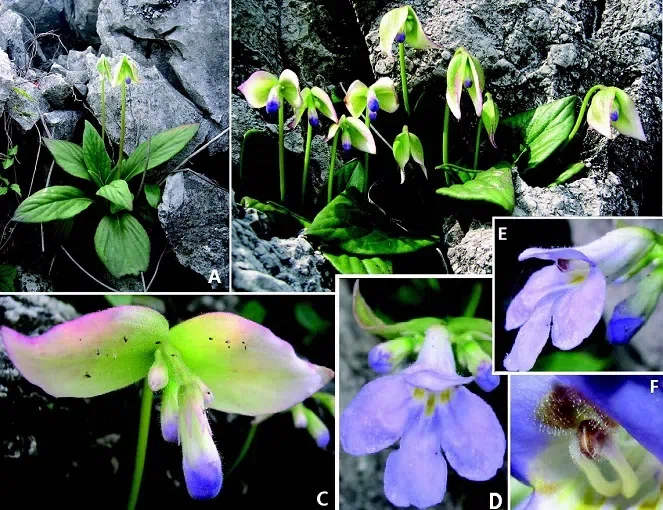
FIGURE 4. Primulina eburnea (Hance) Y. Z. Wang . A. Plant in natural habitat; B. Plants with cymes and flower buds; C. Fully extended bracts and flower buds; D. Frontal view of flower; E. Lateral view of flower; F. Anthers and filaments.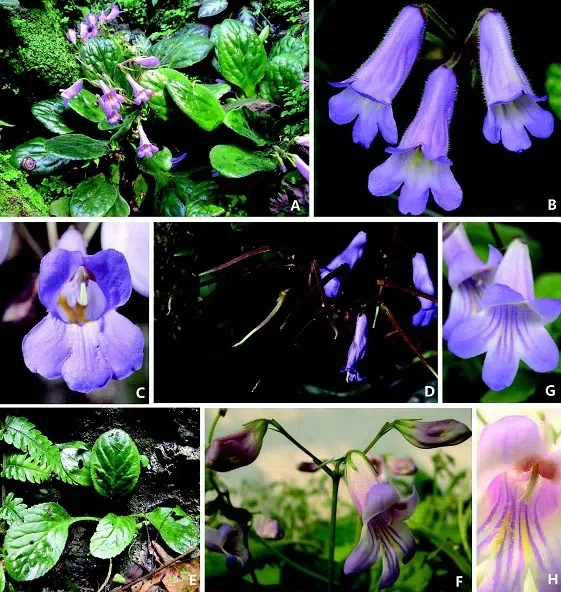
FIGURE 5. Primulina dryas (Dunn) Mich. Möller & A. Weber and P. napoensis (Z. Y. Li) Mich. Möller & A. Weber. A-D: P. dryas. A. Habit; B. Cyme; C. Frontal view of flower and stigma; D. Capsule. E-H: P. napoensis. E. Habit; F. Cyme; G. Frontal view of flower; H. Stigma. [Photos: A-B, D-H: Fang Wen; C: Peter Man]
FIGURE 6. Primulina spec. nov. A. Plant in natural habitat ; B. Plants with cymes and flower ; C. Cymes and lateral view of flowers ; D. Bracts ; E. Frontal view of flower; F. Capsules. [Photos: Jian Li, Fang Wen and Xin Hong]
Editors' Note: P. spec. nov. is Primulina pseudoroseoalba Jian Li, F. Wen & L.J. Yan
Above-mentioned content and figures were cited from Wen & Wei, 2014.
No. 2 Xin Hong, Shou-Biao Zhou & Fang Wen:Petrocodon villosus (Gesneriaceae), a new species from Guangxi, China
Blumea 59: 33 – 36
ABSTRACT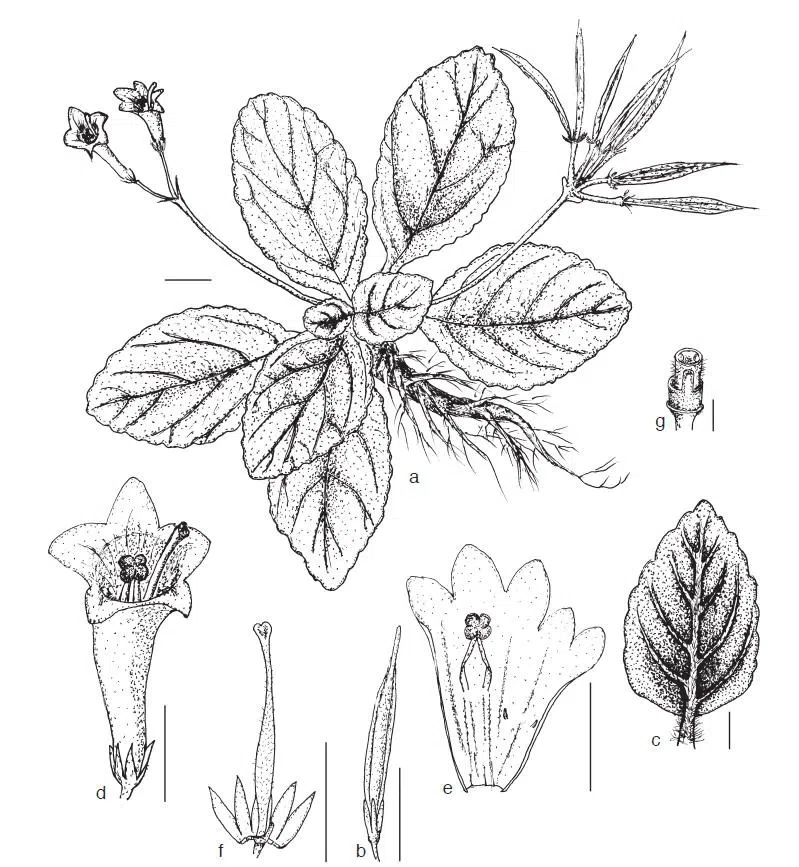
FIGURE 1. Petrocodon villosus Xin Hong, F. Wen & S.B. Zhou. a. Mature individual, habit; b. mature capsule; c. abaxial leaf; d. flower; e. opened corolla for showing stamens and staminodes; f. pistil and opened calyx lobes; g. transverse section of ovary with the annular nectary at base (all: F. Wen 0173, IBK). — Scale bars: a–c = 1 cm; d–f = 5 mm; g = 1 mm. — Drawn by Ms. H.M. Xiao.
FIGURE 2. Petrocodon villosus Xin Hong, F. Wen & S.B. Zhou. a. Habitat; b. mature individual, habit; c. open flower and cyme; d. underside of plant; e. fruits; f. indumentum of young leaves and petioles; g. brown indumentum of abaxial leaf; h. stigma; i. opened calyx lobes and annular nectary with an elongated projection or horn on one side. — Photos: a–g. Fang Wen; h, i. Xin Hong.
Above-mentioned content and figures were cited from Hong et al., 2014.
No. 3 Shou-Biao Zhou, Xin Hong, Zhong-Lin Li & Fang Wen: Primulina diffusa (Gesneriaceae), a new species endemic to the karst limestone area in southwestern Guangxi, China
Annual Botanical Fennici 51: 212–216.
ABSTRACT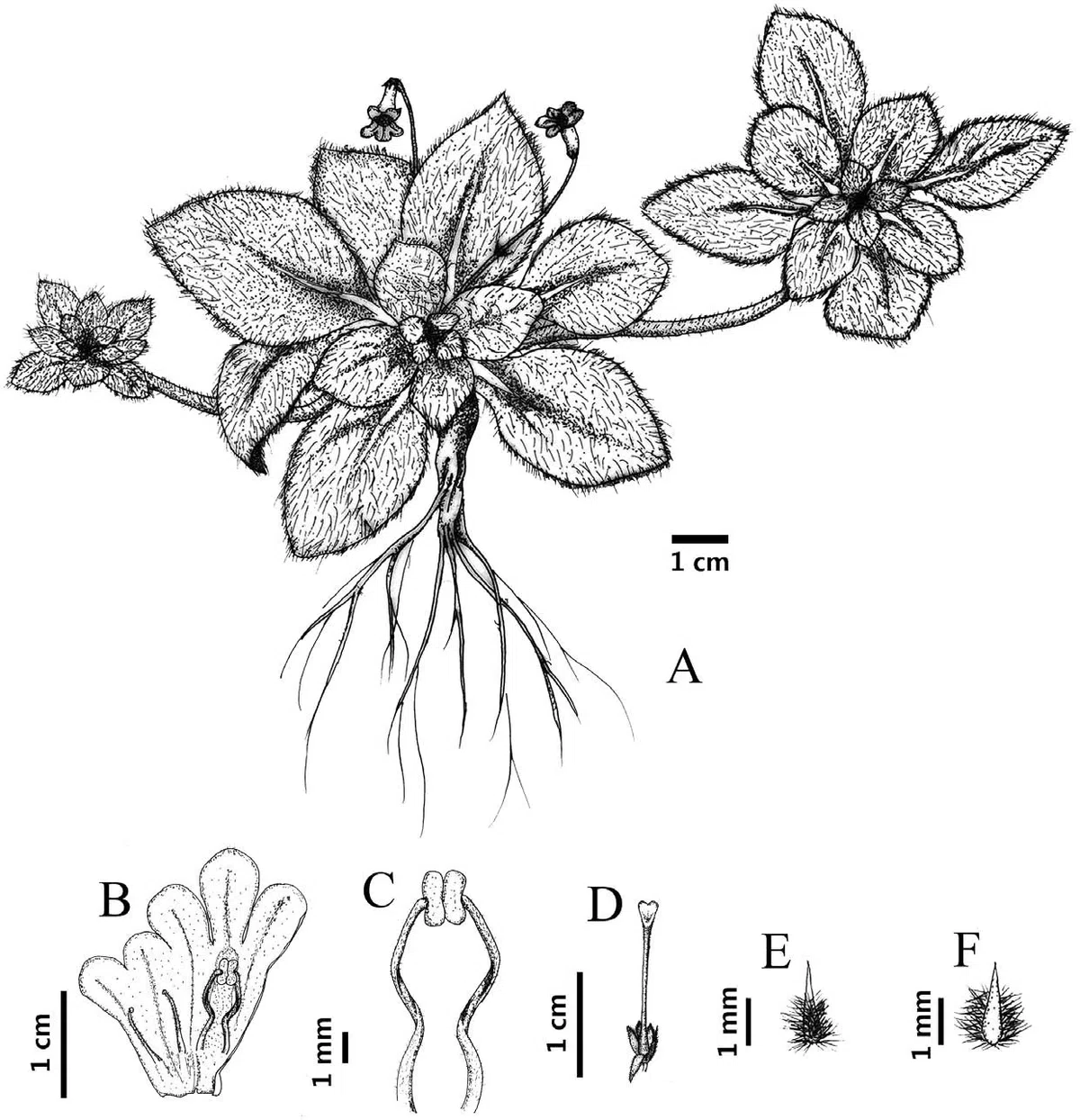
FIGURE 1. Primulina diffusa (From the holotype). — A: Habit in flowering. — B: Cut-open flower showing stamens and staminodes. — C: Anthers. — D: Calyx and pistil. — E: Bract lobe, dorsal view showing dense pubescence. — F: Bract lobes, ventral view.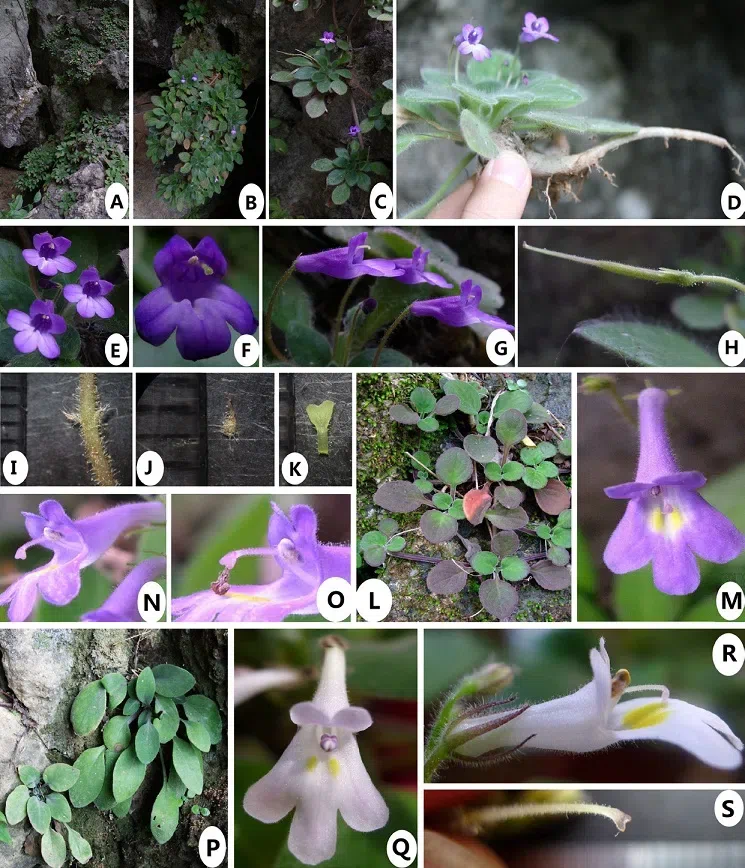
FIGURE 2. A–K: Primulina diffusa. — A: Habitat. —B: Habit. — C: Rosette plants showing stolons. — D: Plant and rhizome. — E: Frontal view of flowers. — F: Flower throat. — G: Lateral view of flowers. — H: Calyx and pistil. — I: Bracts. — J: Abaxial surface of bract. — K: Stigma. — L–O: P. hochiensis. — L: Plants and stolons. — M: Front view of flower. — N: Lateral view of flower. —O: Stigma. — P–S: P. hochiensis var. rosulata. — P: Habit. — Q: Lateral view of flower. — R: Frontal view of flower. — S: Stigma.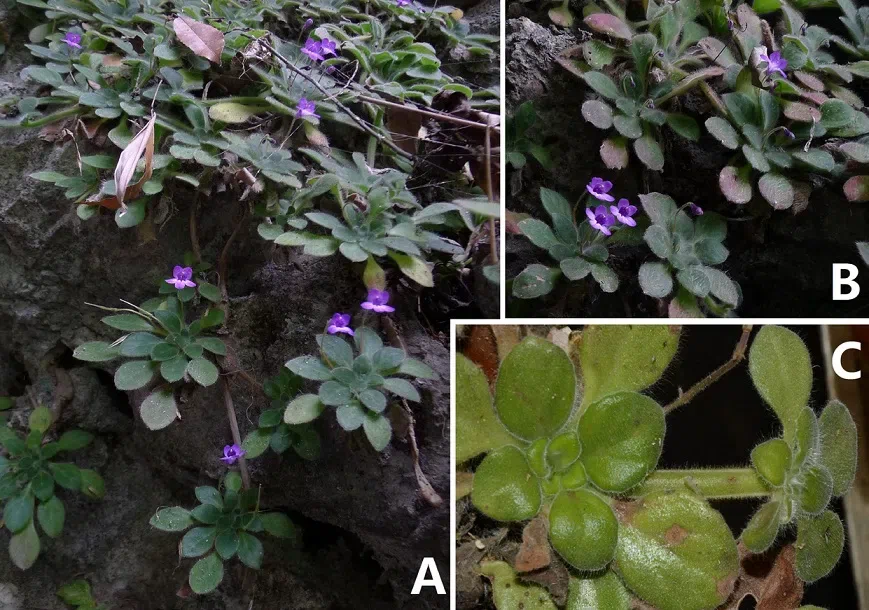
FIGURE 3. Primulina diffusa. —A: Habit. — B: Stolons and flowers. — C: Close-up of plant with stolon.
Above-mentioned content and figures were cited from Zhou et al., 2014.
No. 4 Shi-Lian Huang, Ying Liu, Long-Fei Fu & Fang Wen:Ornithoboea lacei Craib —A newly recorded species from China
Acta Botanica Boreali-Occidentalia Sinica 34(6): 1283–1285.
ABSTRACT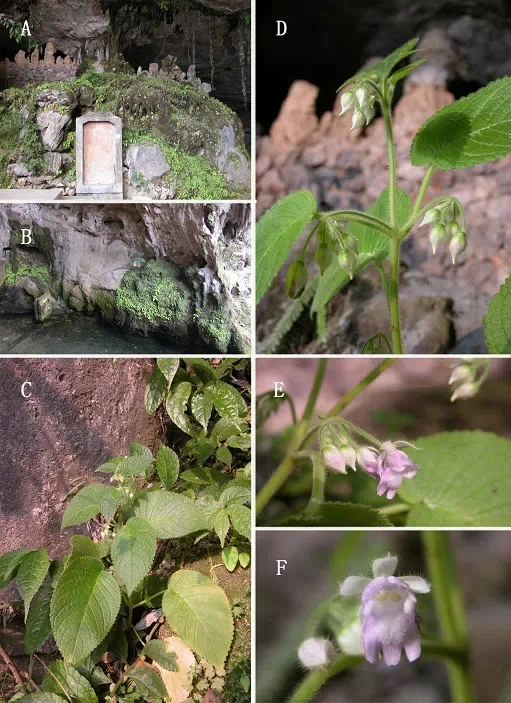
FIGURE 1. Ornithoboea lacei Craib A.B. Habitat; C.D. Plant; E. Inflorescence; F. Flower.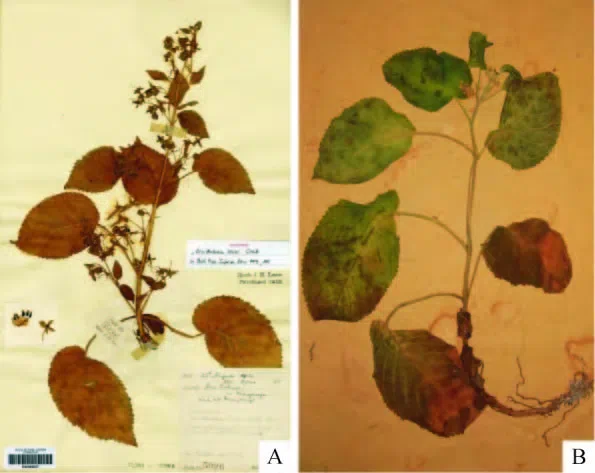
FIGURE 2. Ornithoboea lacei Craib A Syntype; B. Vocher specimens of this article.
Above-mentioned content and figures were cited from Huang et al., 2014.
No. 5 Fang Wen, Yi-Gang Wei & Hui-Zhen Lü: Primulina carinata (Gesneriaceae), a new species from Guangxi, China
NOVON 23:381–384.
ABSTRACT
Editors' Note: Chirita vesiculosum Y.G. Wei, Fang Wen & H.Z. Lü, nom. nud. (Wei et al., 2010: 490–491, figs. 1–3).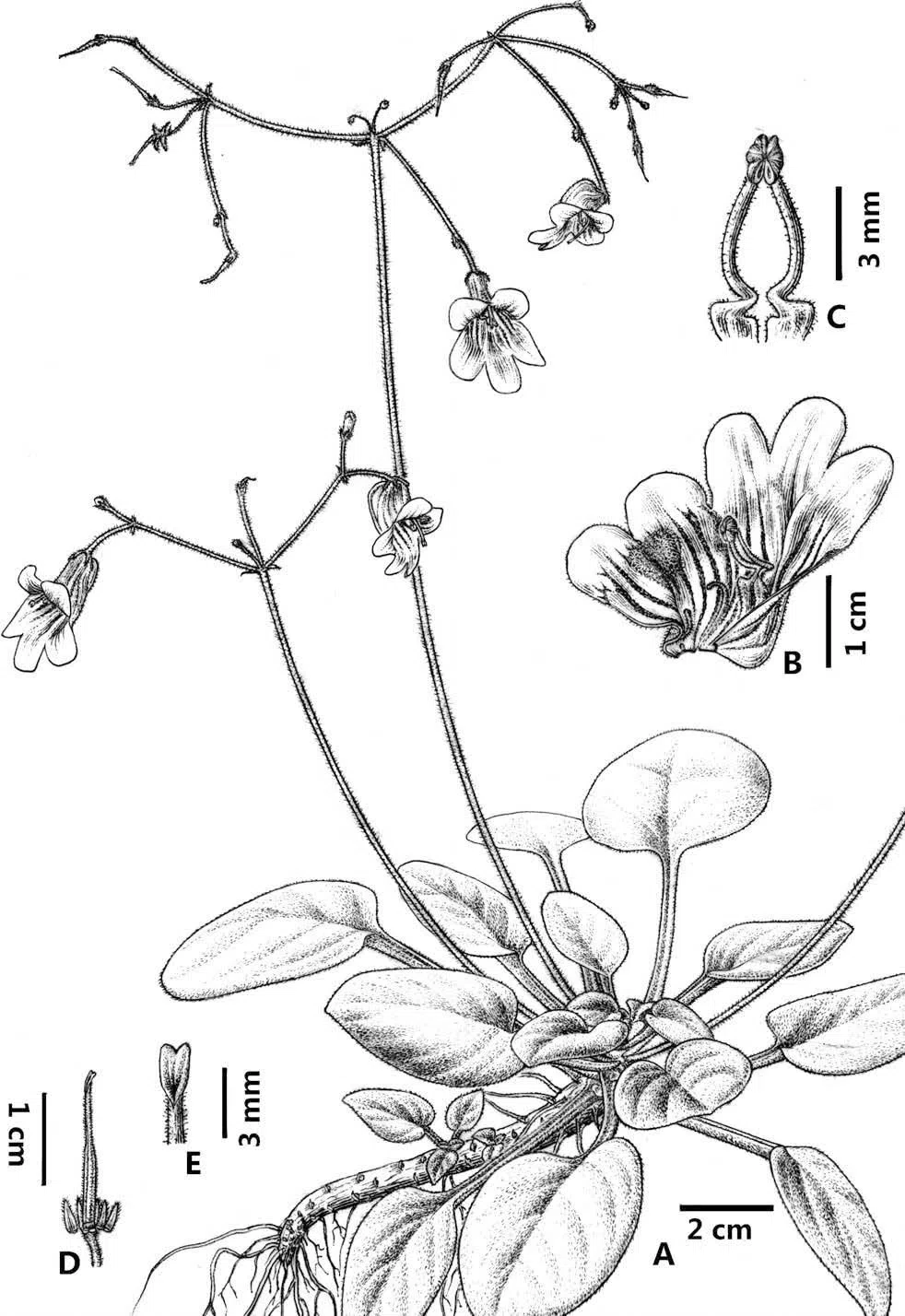
FIGURE 1. Primulina carinata Y.G. Wei, F. Wen & H.Z. Lü. —A. Habit. —B. Corolla dissected open to show stamens and staminodes. — C. Stamens geniculate near the base. —D. Calyx and pistil, with corolla tube removed. —E. Close-up of stigmatic region. Drawn by Y.X. Zhu from the holotype F. Wen & Y.G. Wei WM-GC0702 (IBK).
FIGURE 2. Primulina carinata Y.G. Wei, F. Wen & H.Z. Lü
Above-mentioned content was cited from Wen & Wei, 2014.
No. 6 Michael Möller , Wen-Hong Chen, Yu-Min Shui, H. Atkins & D.J. Middleton: A new genus of Gesneriaceae in China and the transfer of Briggsia species to other genera
Gardens’ Bulletin Singapore 66(2): 195–205.
TYPE: Glabrella mihieri (Franch.) Mich. Möller & W.H.Chen (FIGURE 1)
Distribution. Two species, endemic to China.
Etymology. After the distinctly hairless leaves.
Glabrella longipes (Hemsl. ex Oliv.) Mich. Möller & W.H.Chen, comb. nov. (FIGURE 2)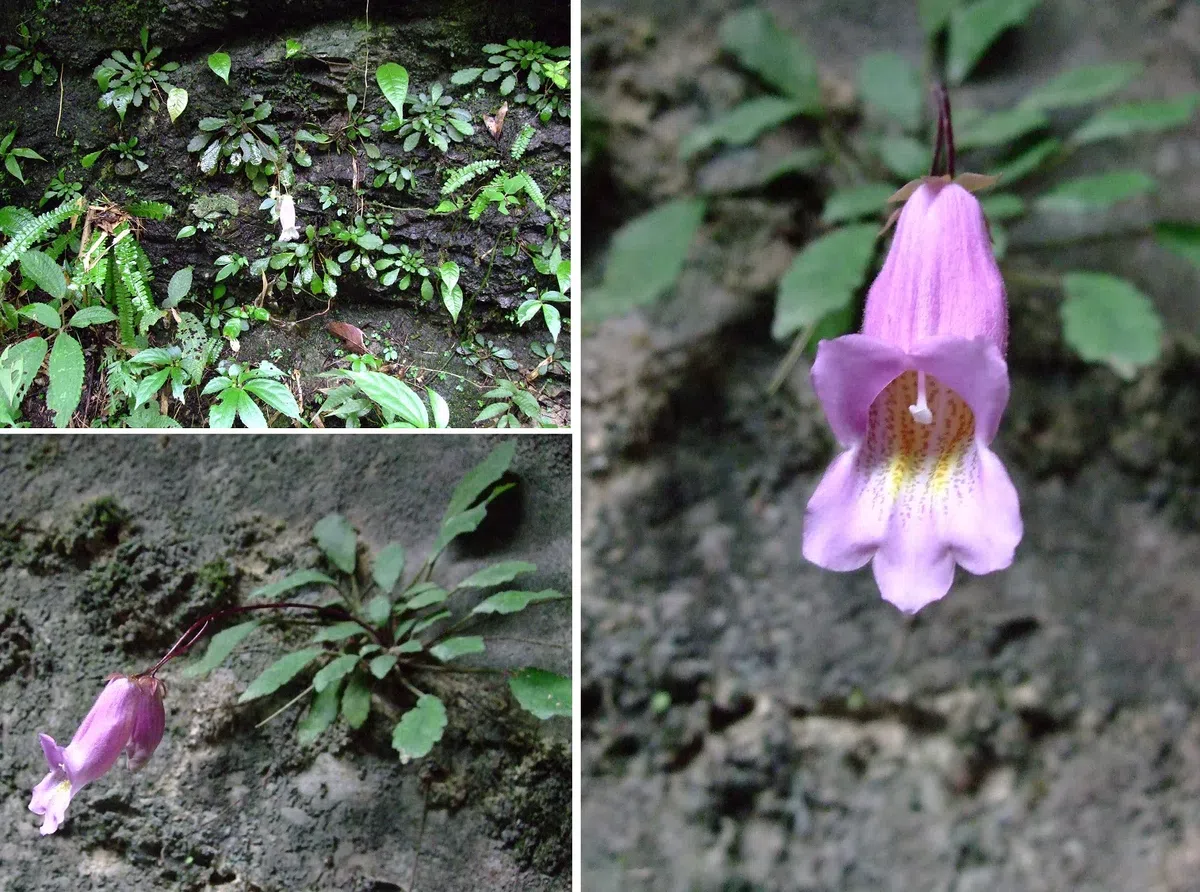
FIGURE 1. Glabrella mihieri (Franch.) Mich. Möller & W.H.Chen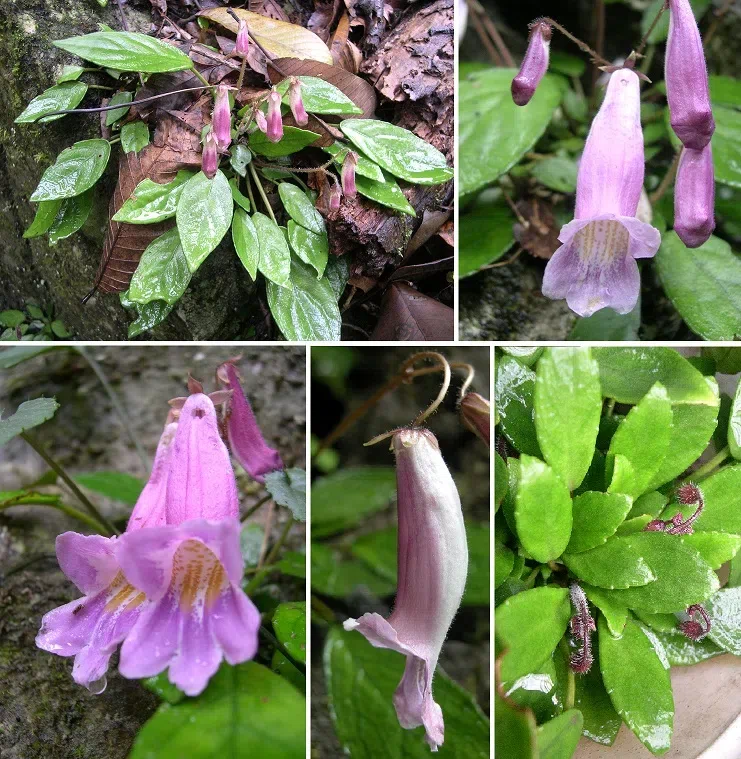
FIGURE 2. Glabrella longipes (Hemsl. ex Oliv.) Mich. Möller & W.H.Chen, photographed by Dr Fang Wen.
Above-mentioned content and figures were cited from Möller et al., 2014.
No. 7 Xin Hong, Ou-Wen Wang, Shou-Biao Zhou & Fang Wen:Primulina argentea (Gesneriaceae), a new species endemic to a karst cave in N Guangdong, S China
Willdenowia 44: 377–383.
ABSTRACT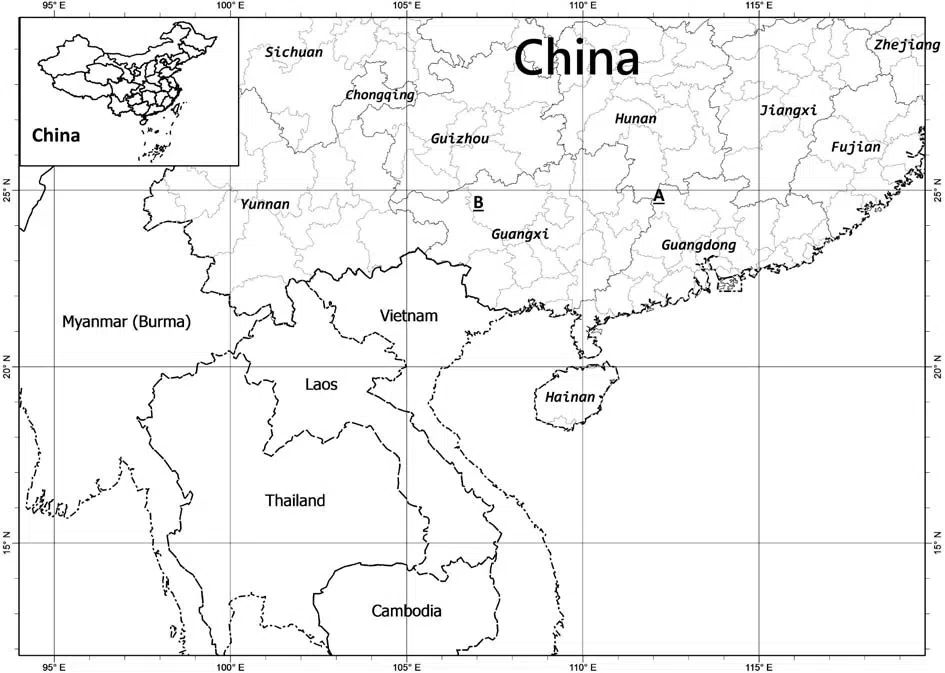
FIGURE 1. Known distributions of Primulina argentea (A) and P. fengshanensis (B).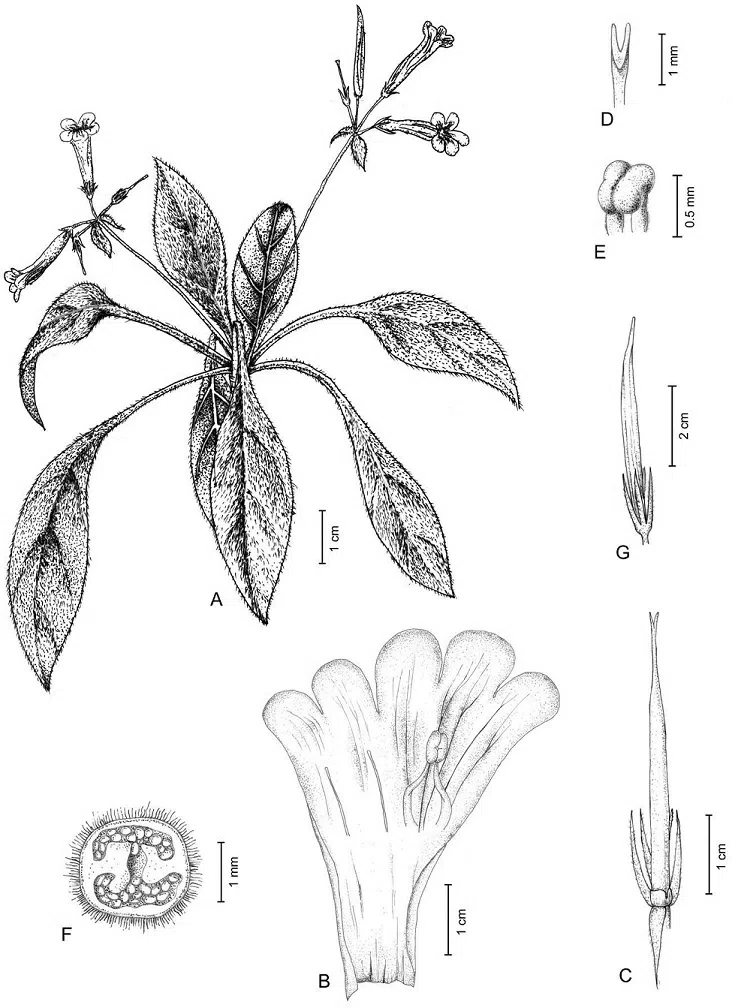
FIGURE 2. Primulina argentea – A: habit, in flower; B: cut-open corolla showing stamens and staminodes; C: calyx, pistil and disk; D: stigma; E: anthers; F: cross-section of ovary; G: capsule. – All drawn from the holotype by Xiao-Mei Xiao.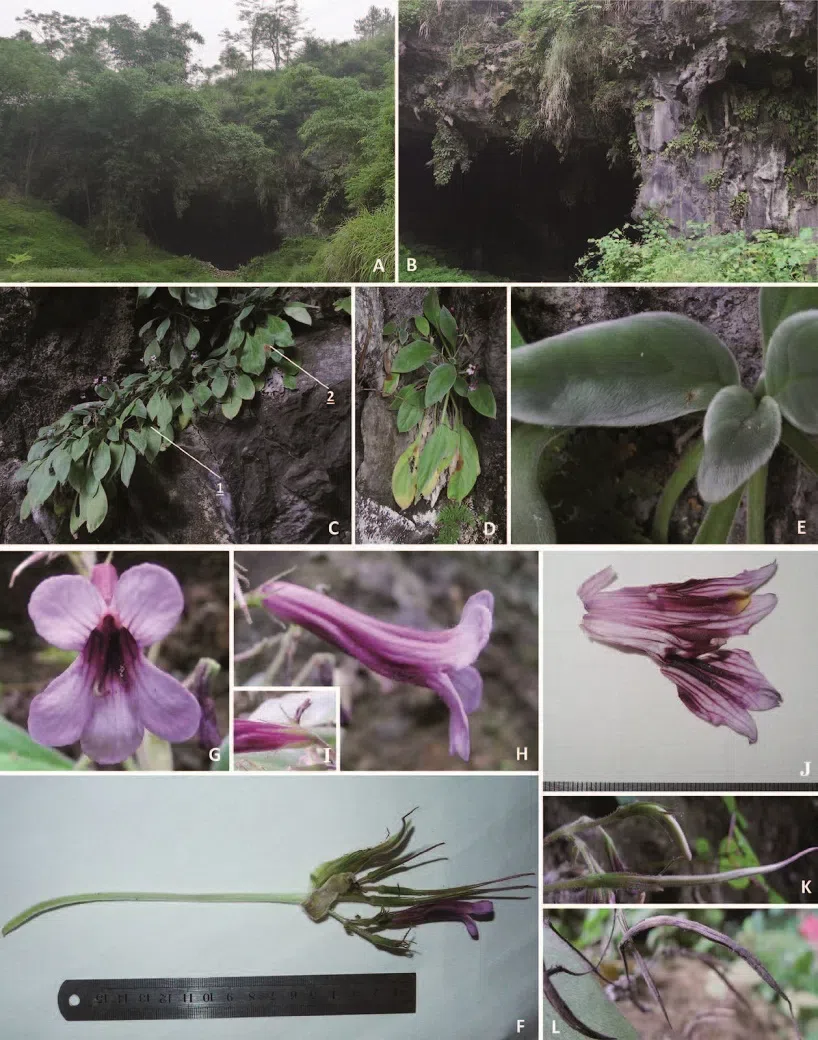
FIGURE 3. Primulina argentea – A & B: habitat at type locality; C: plants of P. argentea (1) and P. orthandra (2) growing side by side; D: habit; E: leaves, showing dense, appressed, sericeous-villous indumentum; F: cyme; G: frontal view of flower; H: lateral view of flower; I: calyx lobes; J: opened corolla; K: young capsule; L: mature capsule. – Photographs by Fang Wen, type locality of P. argentea , 19 Sep 2012.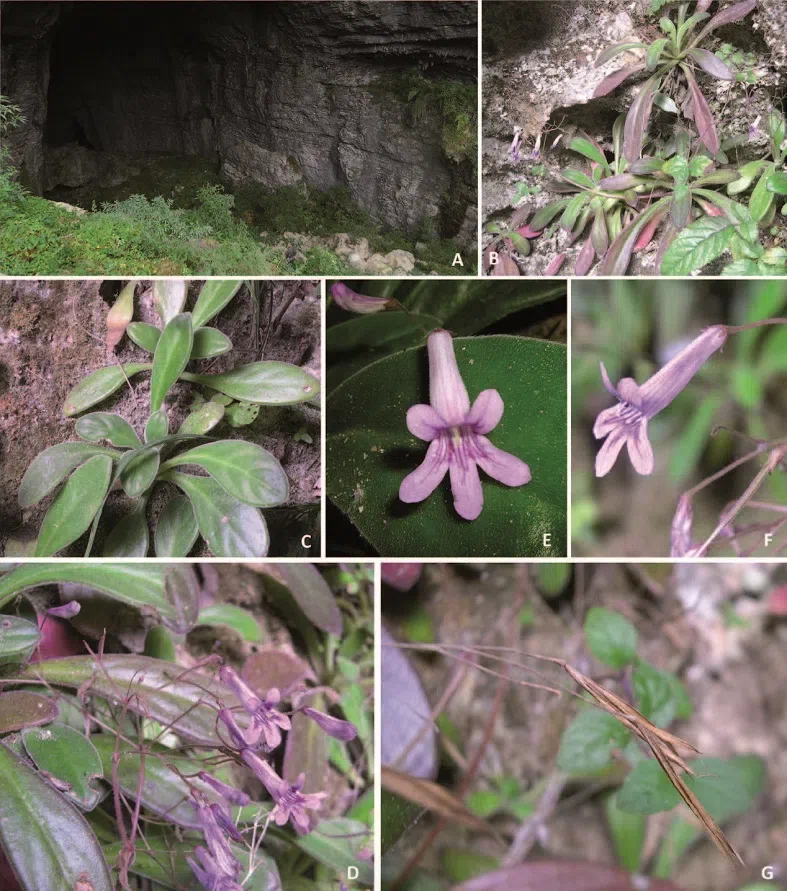
FIGURE 4. Primulina fengshanensis – A: habitat; B: habit; C: leaves; D: cyme; E: frontal view of flower; F: lateral view of flower; G: dehisced capsules. – Photographs by Fang Wen, type locality of P. fengshanensis (see Remarks), 1 Oct 2010.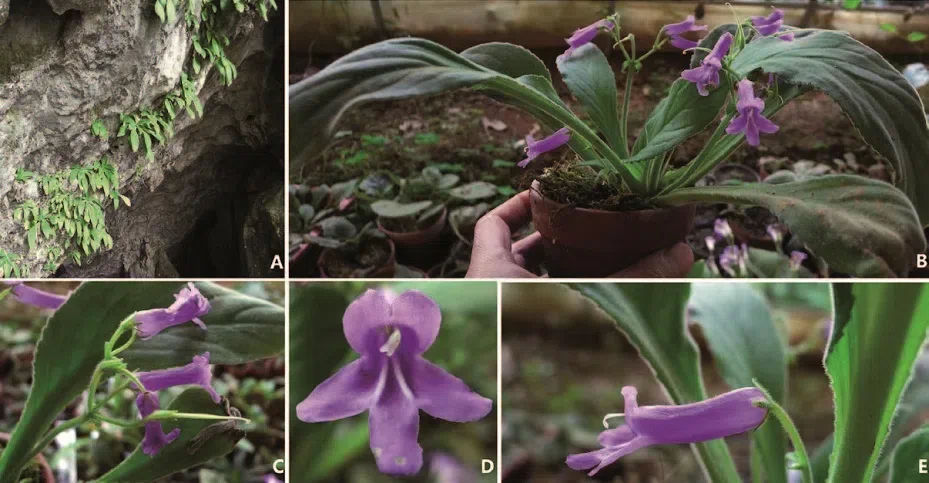
FIGURE 5. Primulina orthandra – A: habitat; B: habit; C: cyme; D: frontal view of flower; E: lateral view of flower. – Photographs by Fang Wen; A: type locality of both similar species, 19 Sep 2012; B–E: nursery of Gesneriad Conservation Center of China, Guilin, 7 Apr 2013.
Above-mentioned content and figures were cited from Hong et al., 2014.
No. 8 Fang Wen, Yi-Gang Wei & Hui-Zhen Lü:Primulina glandaceistriata (Gesneriaceae), a new species from Guangxi, China
Phytotaxa 188 (1): 049–054.
ABSTRACT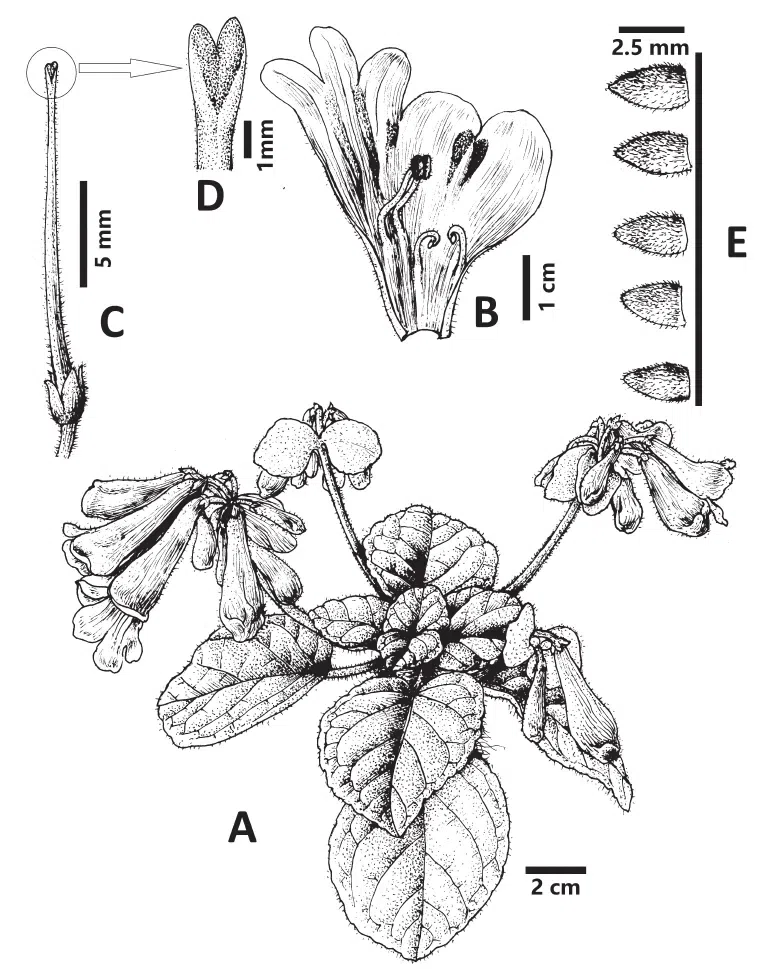
FIGURE 1. Primulina glandaceistriata X.X. Zhu, F. Wen & H. Sun. A. Growth habit. B. Opened corolla showing stamens and staminodes. C. Overhead view of pistil. D. Stigma. E. Calyx lobes.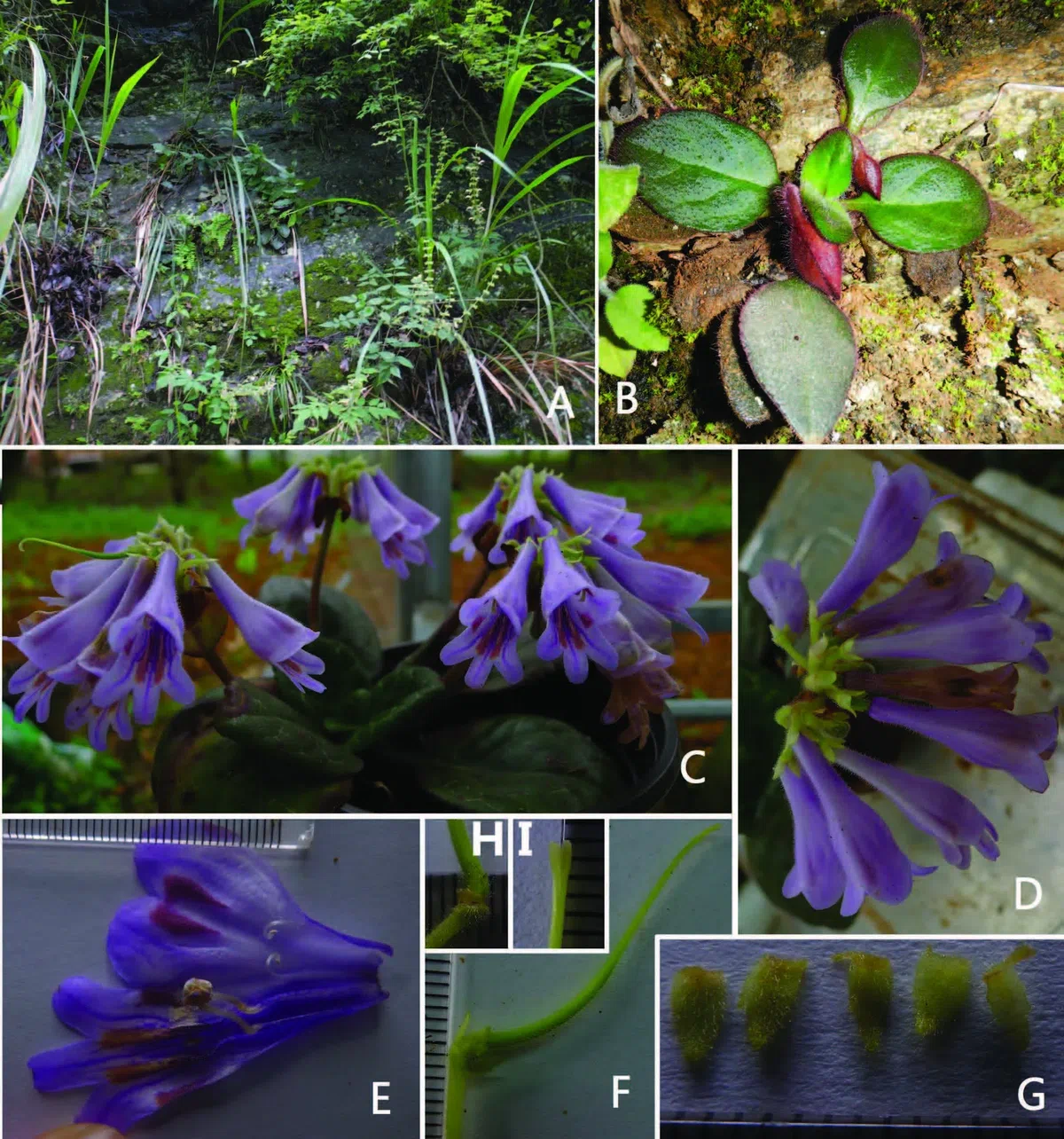
FIGURE 2. Primulina glandaceistriata X.X. Zhu, F. Wen & H. Sun
Above-mentioned contents were cited from Zhu, 2014.



The newest published taxa of Gesneriaceae of China and/or nearby areas before 30 June, 2014
2016-08-05
New taxa in China
Got Any Question?
If you are having any questions, please feel free to ask.
Drop Us a Line

Hot news
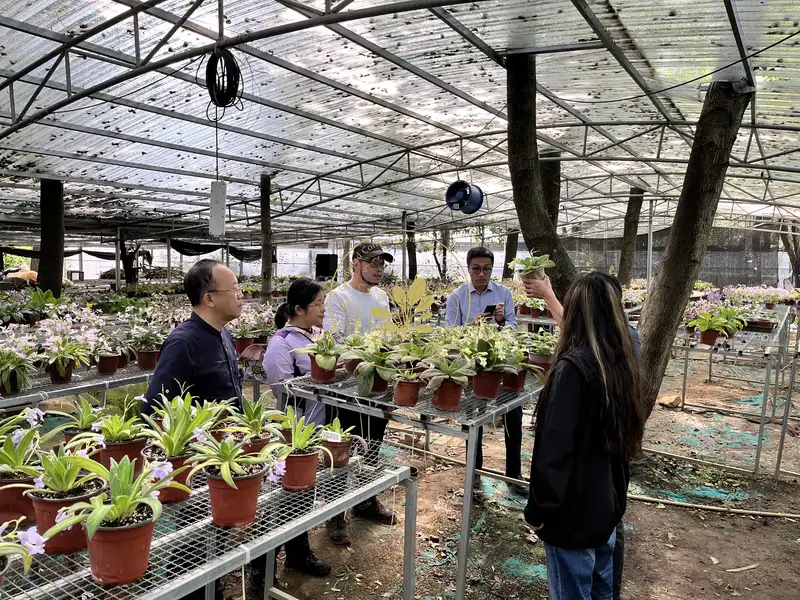
Popularization of Science
National Forestry Experts Review 6 New Guangxi Primulina Varieties

Field investigation
Field investigation of Primulina gueilinensis
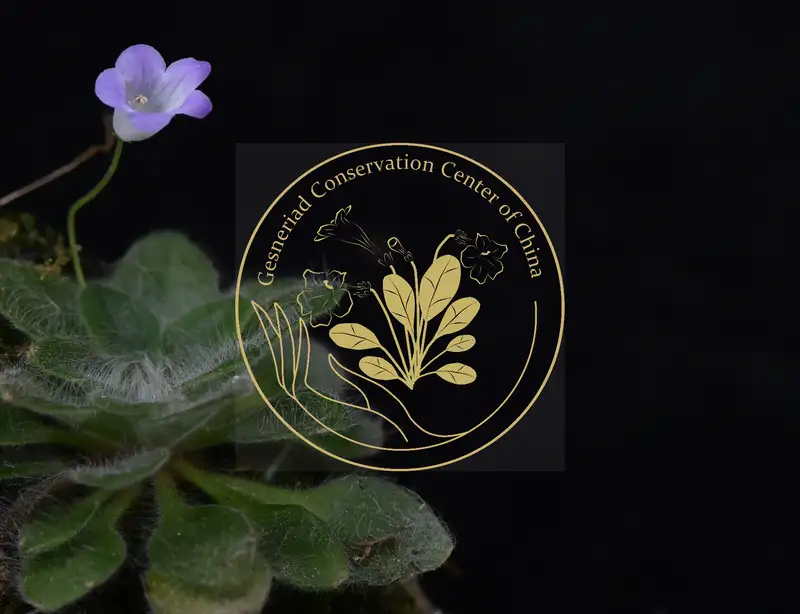
Field investigation
A field investigation of a new species, Primulina longanensis, of the Primulina genus from the Long'An County of Nanning city

Field investigation
Field investigation in Duqiao Mountain, Rong County

The spirit in the crevices of Karst rocks — the standout among the Karst flowers, the ornamental plants of the Gesneriaceae family are in full bloom!
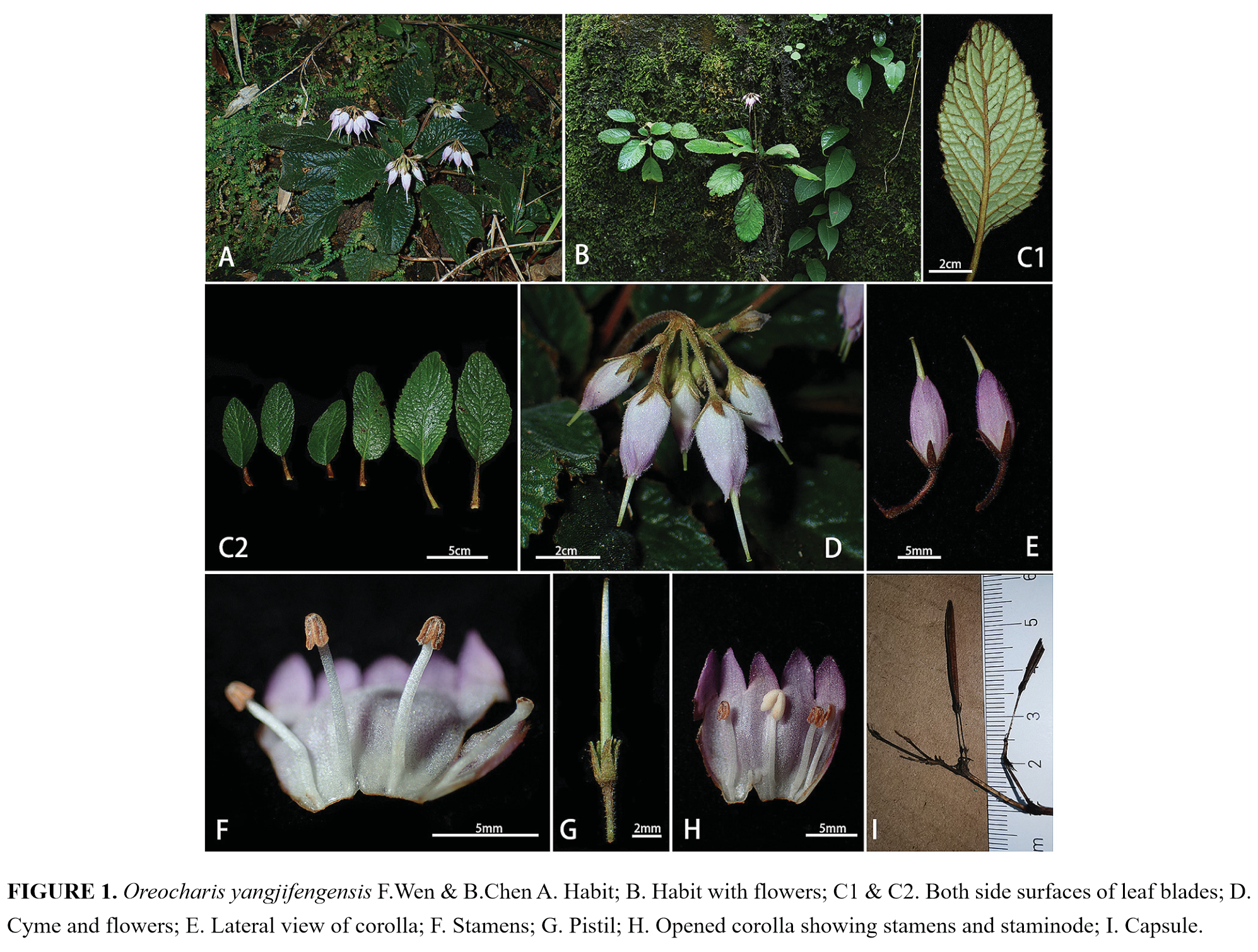
New taxa in China
The recently published new taxa and new records of Gesneriaceae from China before 31 December 2023 (4)